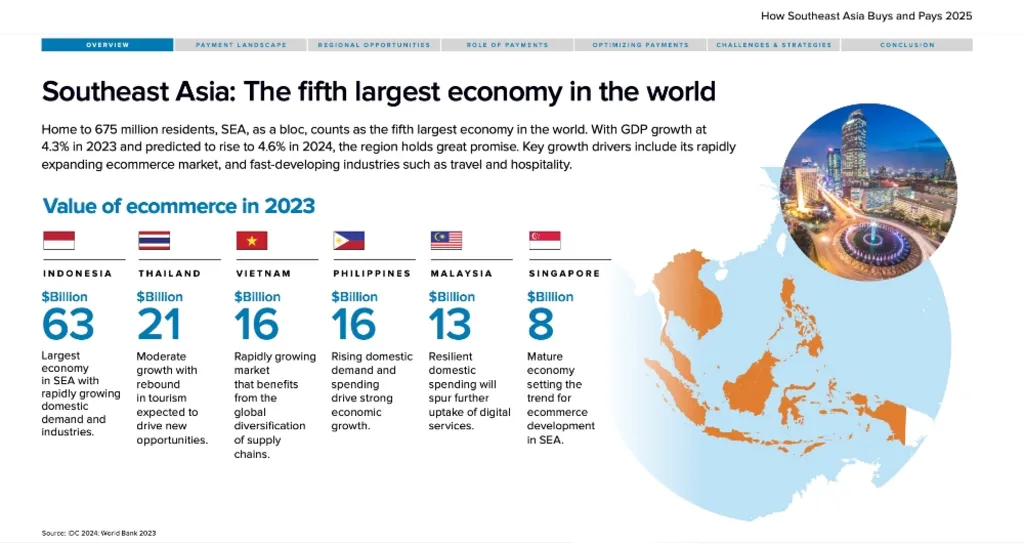Southeast Asia is becoming a major force in the global digital economy. As digital trade agreements take shape, the region is moving fast toward deeper integration, smarter commerce, and stronger economies. The Southeast Asia digital trade ecosystem is projected to contribute $360 billion to global digital trade by 2025, growing to $1 trillion by 2030 or nearly 10% of the global total.
The Scale of Southeast Asia’s Digital Boom

The region’s digital economy was valued at $194 billion in 2022 and is expected to reach $330–363 billion by 2025. E-commerce is leading the charge, expected to grow from $172 billion in 2025 to $230 billion in 2026. Digital payments are also key, with transaction values surpassing $247 billion in 2023, and projected to hit $417 billion by 2028.
This surge is driven by over 600 million people, rising internet penetration, and widespread mobile access. In 2023, 88.9% of internet users accessed the web through smartphones, a powerful indicator of mobile-first growth.
Read Also: Southeast Asia Digital Transformation Accelerates Fast in the Region
The Role of Southeast Asia Digital Trade Agreements
Frameworks like the Regional Comprehensive Economic Partnership (RCEP) and the ASEAN Digital Economy Framework Agreement (DEFA) are changing the game. These deals aim to form the ASEAN Digital Economic Community by 2045, creating seamless cross-border digital trade flows.
Digital trade agreements don’t just open markets. Instead, they build digital bridges. They help harmonize regulations, improve digital infrastructure, and enable businesses to scale across borders. In Singapore, for instance, 55% of online purchases are cross-border, with growth expected at 5.7% CAGR through 2029.
Super Apps and Cross-Border Commerce
A wave of super apps like Grab, GoTo, and Shopee is reshaping the regional digital landscape. These platforms integrate transport, payments, retail, and entertainment into a single user experience. Powered by AI and backed by regional policies, they are making digital services more accessible and seamless.
Read Also: Super-Apps and Southeast Asia Fintech Innovations are Rising Fast
AI-driven personalization, especially on platforms like TikTok Shop, is also enhancing shopping experiences and driving customer engagement. This innovation is supported by policy frameworks that promote open digital economies and foster tech collaboration.
Read Also: Southeast Asia Cross-Border Trade Goes Digital
National Impact: Indonesia Leading the Southeast Asia Digital Trade
Indonesia, Southeast Asia’s largest digital economy, shows how impactful these trade deals can be. The country is expected to surpass $130 billion in digital economy value by 2025, thanks to 79.5% internet penetration and a young, digital-native population.
Digital trade agreements support Indonesia’s growth by encouraging infrastructure investment, enabling smoother e-commerce flows, and helping startups scale regionally.
Toward a Unified Southeast Asia Digital Trade & Economy
The 22% e-commerce CAGR projected through 2026 illustrates how fast the region is evolving. Behind the numbers are people buying, selling, connecting, and innovating across borders. All of these are made possible by shared digital rules and cooperative frameworks.
Southeast Asia digital trade isn’t just about transactions. It’s about building a connected, inclusive, and future-ready economy. With strategic agreements in place and digital adoption rising, Southeast Asia is positioning itself as a global leader in digital commerce and technology integration. As digital ecosystems mature and cross-border partnerships strengthen, the region's next phase of growth will be defined not just by technology, but by collaboration and shared opportunity.







